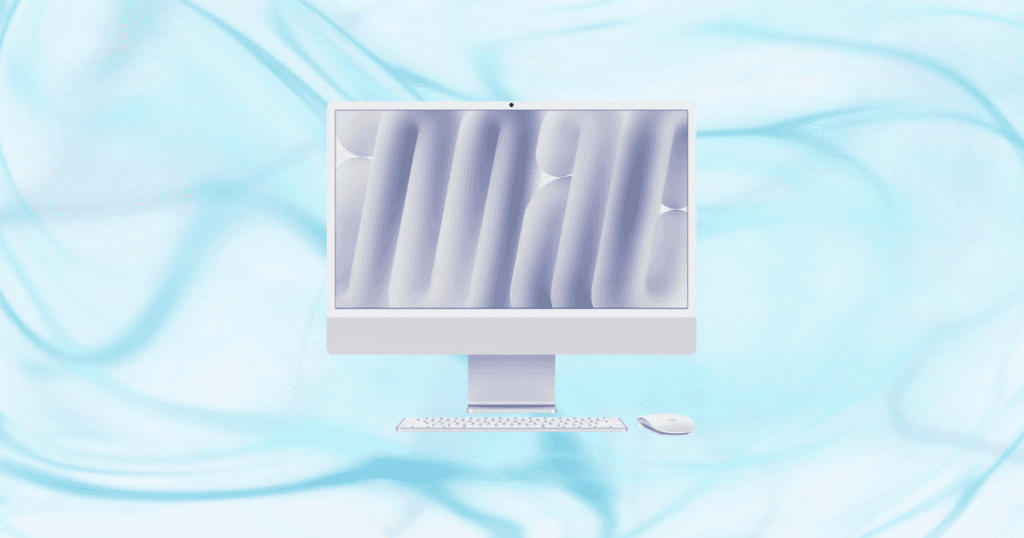Apple’s rumored 90Hz displays for its upcoming iPad Air, Studio Display, and 24-inch iMac mark a notable upgrade in user experience. Moving from the standard 60Hz to 90Hz shows Apple’s response to increasing consumer demand for smoother visuals and more responsive interfaces—a trend that has become standard across high-end devices in the tech world. With Apple now reportedly gearing up for this change, let’s dive into what this could mean for device performance, market positioning, and user experience.
Understanding the Importance of 90Hz Refresh Rates
Apple’s leap to 90Hz would place it between the standard 60Hz and the premium 120Hz ProMotion technology, balancing affordability and performance. Higher refresh rates are crucial for smoother visuals, especially in gaming, video streaming, and design tasks. As competitors like Samsung and Google continue to roll out 90Hz and even 120Hz displays, Apple’s shift aligns it more closely with market expectations.
Benefits of a 90Hz Refresh Rate
- Improved Responsiveness: 90Hz allows for more fluid screen transitions, enhancing the feel of interactions.
- Reduced Motion Blur: Users experience clearer, sharper visuals, especially important in fast-paced content.
- Optimized Power Consumption: Compared to 120Hz, 90Hz can provide smoother visuals without draining battery as quickly, which is ideal for tablets and desktops.
For more insights on how higher refresh rates impact devices, see our guide on Choosing the Right Refresh Rate for Your Device.
Targeted Devices: Where 90Hz Could Make the Biggest Impact
M3 iPad Air
The M3 iPad Air, expected to debut in early 2025, will likely be the first device to feature this 90Hz display. This model has long bridged the gap between entry-level iPads and the high-end iPad Pro. The addition of a 90Hz display would further cement its appeal among creatives, students, and professionals who value smooth scrolling and responsive interactions.
Potential Benefits for iPad Air Users
- Enhanced Drawing Experience: Ideal for digital artists, as lines and strokes appear smoother and more immediate.
- Better Media Consumption: Watching movies or scrolling through images becomes more immersive with fewer visual interruptions.
24-inch iMac
Apple’s 24-inch iMac received an M4 chip update recently, and if the rumored 90Hz upgrade follows, this desktop could appeal even more to digital artists and designers. The 90Hz refresh rate would enhance the iMac’s display for those working with motion graphics or engaging in design work.
Studio Display
Apple’s Studio Display—featuring a 27-inch 5K screen—launched with a 60Hz refresh rate, a standard that left some professionals hoping for more. While a mini-LED Studio Display with ProMotion support was rumored, analyst Ross Young reported in April 2023 that Apple had shelved that plan. If Apple upgrades the Studio Display to 90Hz, it could offer a solid middle ground for creatives seeking high performance.
Market Positioning: Competing with Industry Leaders
Apple’s venture into higher refresh rates responds to competitor advancements. Many Android devices, including those from Samsung and Xiaomi, now feature displays with refresh rates from 90Hz to 144Hz. Here’s how Apple’s rumored display lineup compares with competitors:
| Brand | Refresh Rate Options |
|---|---|
| Apple | 60Hz (non-Pro), 120Hz (Pro), upcoming 90Hz |
| Samsung | 90Hz to 144Hz |
| 90Hz to 120Hz |
The rumored shift positions Apple’s non-Pro devices to stand out among similarly priced devices while maintaining a clear hierarchy between its standard and Pro models. This move also offers an alternative for users seeking enhanced visuals without the premium associated with 120Hz ProMotion displays.
Technical Challenges Apple May Face
Upgrading to 90Hz displays is not without challenges, particularly around battery life and processing demands.
Potential Obstacles
- Increased Battery Consumption: Higher refresh rates consume more power, potentially impacting battery life. Solutions such as Low-Temperature Polycrystalline Oxide (LTPO) technology, which optimizes refresh rate, may be necessary.
- Thunderbolt 4 Limitations: Thunderbolt 4, commonly used in Apple’s high-performance displays, may not fully support 90Hz refresh rates across all device sizes.
- Component Cost Management: Balancing the added display technology cost without a significant price increase will be critical, particularly for the iPad Air and iMac.
Apple has previously used adaptive refresh rates in its ProMotion displays to manage battery life. If it applies a similar adaptive strategy to its 90Hz technology, Apple could maintain battery efficiency without compromising visual quality.
For a deeper dive into how refresh rates affect battery life, read Our Guide to Balancing Refresh Rate and Power Consumption.
Future Innovations: Apple’s Commitment to Display Technology
Apple’s rumored 90Hz technology is part of its ongoing commitment to display innovation, a journey marked by constant improvements in color accuracy, brightness, and efficiency. The rumored LiquidMotion panel in the iPad Air and iMac demonstrates Apple’s focus on enhancing display fluidity without overwhelming battery resources.
Looking Ahead
- LTPO Technology: This tech, already used in the iPhone 13 Pro’s display, allows for dynamic refresh rates, which could enhance battery life in the new displays.
- LiquidMotion Panel: Rumored for the iPad Air, this technology focuses on maximizing display smoothness for high-demand tasks like sketching, video streaming, and multitasking.
- Enhanced Competition with High-Refresh Monitors: As Apple steps further into high-refresh territory, it signals potential advancements for devices like the Pro Display XDR, where smoother refresh rates could be an industry game-changer.
Apple’s competitors are continually advancing in this field, so Apple’s rumored 90Hz upgrade aligns it with current consumer demands while opening up new possibilities for future releases.
Aligning with Consumer Demand: The Growing Trend of High Refresh Rates
The demand for higher refresh rates reflects a broader consumer trend towards enhanced visual experiences. Apple’s decision to incorporate 90Hz displays answers this call while reinforcing its competitive edge. Recent surveys and market analyses reveal the significance of this trend:
- Gaming and Streaming Preferences: Consumers are increasingly choosing devices with faster refresh rates for smoother media playback.
- Visual Clarity in Daily Use: Whether for reading, social media scrolling, or graphic work, users are finding that higher refresh rates contribute to a more pleasant experience.
- Standardization Across Tiers: As more brands adopt 90Hz and beyond, this feature is quickly becoming expected even in non-premium devices.
In choosing to meet this demand with its upcoming releases, Apple not only appeals to loyal users but also positions itself competitively among brands like Google and Samsung.
MacReview Verdict: The Significance of 90Hz in Apple’s Device Strategy
The rumored introduction of 90Hz displays across Apple’s iPad Air, Studio Display, and iMac signals a pivotal evolution in Apple’s approach to display technology. This move demonstrates Apple’s commitment to delivering high-quality visuals that meet user expectations for smoother, more engaging interactions. As the company navigates potential technical and market challenges, the 90Hz upgrade could become a defining feature in Apple’s mid-range devices, appealing to a broader demographic that values enhanced visual performance without the Pro price tag.
Whether you’re an Apple enthusiast or simply looking for the latest in display tech, this rumored shift to 90Hz brings exciting possibilities for 2025 and beyond. Stay updated on Apple’s developments and explore more articles on our Apple Innovations Blog for in-depth product reviews, release news, and tech guides.




